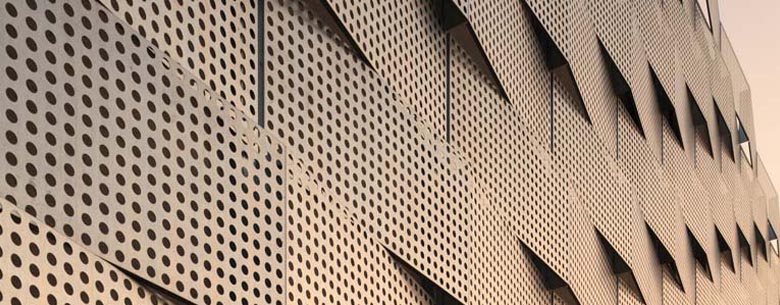The Versatility of Exterior Perforated Metal Panels
In recent years, exterior perforated metal panels have emerged as a significant trend in architectural design, used for both functional and aesthetic purposes. These innovative materials offer a blend of style, sustainability, and practicality, making them an attractive choice for various applications in modern buildings. This article delves into the various benefits and applications of exterior perforated metal panels.
Aesthetic Appeal
One of the primary reasons architects and designers choose perforated metal panels is their versatility in aesthetics. With customizable patterns and designs, these panels can dramatically enhance the visual appeal of a structure. They can be adapted to suit any style—from sleek and modern to classic and ornate. The ability to design intricate patterns allows creators to express creativity while ensuring that the building maintains a unique identity. The play of light and shadow through the perforations adds another layer of visual interest, often changing throughout the day as the sun moves across the sky.
Functionality and Performance
Beyond their aesthetic contributions, exterior perforated metal panels serve numerous functional purposes. One of the most significant benefits is their ability to provide ventilation, particularly in facade applications. The perforations facilitate air circulation, allowing buildings to breathe and reducing the risk of moisture accumulation. This is particularly beneficial in humid climates where higher ventilation is crucial.
Additionally, these panels can improve the energy efficiency of a building. The controlled airflow helps to maintain interior temperatures, which can reduce the reliance on air conditioning systems. As a result, buildings can achieve lower energy costs and reduced environmental impact.
Sunshading and Privacy
Another crucial function of exterior perforated metal panels is sun shading. By strategically positioning these panels, architects can reduce glare and heat gain inside buildings. This capability not only enhances occupant comfort but also prolongs the life of interior furnishings by minimizing UV exposure. Moreover, when designed with specific patterns or levels of perforation, these panels can provide privacy without completely blocking natural light.
exterior perforated metal panels

The privacy aspect is particularly advantageous in urban environments where buildings are often in close proximity to one another. Perforated metal panels can serve as effective screens, allowing natural light to filter through while keeping unwanted eyes at bay.
Sustainability
Sustainability plays a critical role in today's construction and design practices, and perforated metal panels align perfectly with these values. They are often manufactured from recycled materials, and their durability ensures a long lifespan, reducing the need for frequent replacements. Additionally, the energy savings associated with improved building performance contribute to a lower carbon footprint.
Moreover, the lightweight nature of these panels can significantly decrease transportation costs and impacts. When installed as part of a building’s facade, perforated metal panels can also contribute to achieving green building certifications such as LEED (Leadership in Energy and Environmental Design).
Applications in Modern Architecture
The applications of exterior perforated metal panels are vast, spanning a multitude of industries. In commercial architecture, they are used in facades, canopies, and signage. They also find their place in residential settings, often utilized to create visually striking privacy screens or decorative elements in outdoor spaces.
In institutional settings such as schools, hospitals, and government buildings, these panels can be employed not only for aesthetics but also for their ability to improve energy efficiency and occupant comfort. Their adaptability makes them suitable for various climates and architectural styles, ensuring their relevance across diverse projects.
Conclusion
Exterior perforated metal panels have a unique ability to combine form and function, making them an excellent choice for contemporary architecture. Their aesthetic flexibility, coupled with practical benefits such as ventilation and energy efficiency, makes them a valuable resource for architects and designers. As the demand for sustainable buildings continues to grow, the role of these versatile metal panels is poised to expand further, solidifying their place in the future of architectural design. Whether in urban high-rises or tranquil residential retreats, exterior perforated metal panels stand out as a testament to modern creativity and innovation in the built environment.
-
Why Galvanized Trench Cover Steel Grating Resists Corrosion
NewsJul.10,2025
-
The Versatility and Strength of Stainless Expanded Metal Mesh
NewsJul.10,2025
-
Load Calculations in Steel Grating Platforms
NewsJul.10,2025
-
Keeping Pets and Kids Safe with Chicken Wire Deck Railing
NewsJul.10,2025
-
Hole Diameter and Pitch for Round Perforated Metal Sheets
NewsJul.10,2025
-
Aluminium Diamond Mesh in Modern Architecture
NewsJul.10,2025
Subscribe now!
Stay up to date with the latest on Fry Steeland industry news.

